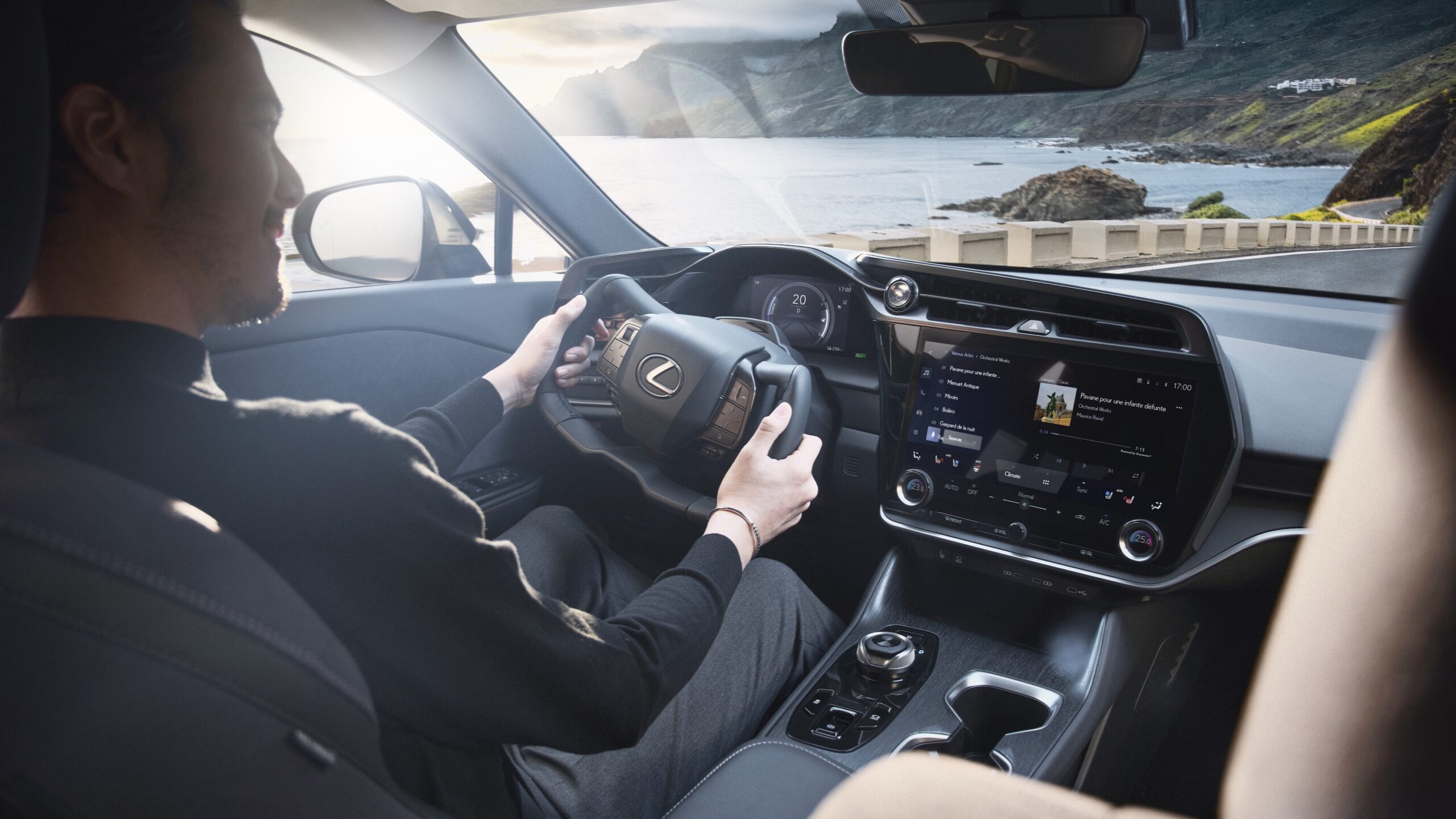

Cars have steered much the same way for just over 100 years, but recently both Tesla and Lexus have decided to reinvent the steering wheel: The auto companies have swapped the wheel out for a simplified steering yoke. Reactions to the change have been polarizing, with some Tesla fans preferring the new look, and others declaring it significantly worse than a wheel. Reviews of the Tesla yoke have indicated an unsafe learning curve, which includes possibly reaching for where a wheel should be and grabbing air. Has Lexus made this concept more viable?
Tesla introduced their new yoke-style wheel when it revamped its Model S flagship sedan in 2021. Though it operates in all ways like a standard steering wheel, the yoke essentially removes the upper segment of the steering wheel rim. Tesla says this enhances the car’s forward visibility and allows the onboard cameras to more accurately track a driver’s eye movement. This change, Tesla and Lexus claim, could ease the transition from human-driven vehicles to autonomous vehicles, whenever that technology becomes safe and viable. But in practice, particularly when reversing a car, the Tesla yoke is difficult to use and requires drivers to retrain their muscle memory.
But Lexus is taking a different approach. With the new electric crossover Lexus RZ 450e, the Japanese automaker has attempted to mitigate the issues with Tesla’s first effort. Lexus, for the first time, has installed a full steer-by-wire system.
Unlike the decades-old system it replaces—a direct shaft between the steering wheel and the rack, which transfers the driver’s inputs to the wheels—steer-by-wire completely removes that physical, mechanical connection. A steer-by-wire system interprets the driver’s steering maneuvers as a digital signal. That signal is sent to an electric motor on the steering box, adjusting the steering angle of the front end of the car. This allows the computer to interpret those inputs based on several factors, including speed, road conditions, and the car’s position on the road to determine exactly how far the car should steer. (Some aircraft have an analogous system called “fly by wire.”)
The system boasts one major benefit: It increases the steering angle at lower speeds in a way that drivers will never need to remove a hand from the wheel to turn a corner or reverse into a parking spot. Lexus’s steer-by-wire completely disposes with hand-over-hand steering, contributing to what the company says is a safer driving experience.
The Lexus system, dubbed One Motion Grip, will increase or decrease the steering ratio continually as the vehicle’s speed changes. The steering will adjust to be quicker at slow speeds like when in parking lots, allowing for larger steering angles with delicate, small inputs at the yoke. At highway speeds, however, the steering becomes much more muted, to maintain stability and keep the car from being too darty. Changes to the ratio really only happen when the wheel is pointed straight ahead, so the driver won’t experience the steering angle change unpredictably in the middle of a corner. Like the Tesla system, this one requires a learning curve, but early reports seem to indicate that the Lexus is easier to become accustomed to. It carries all of the autonomous-adjacent perks of the Tesla yoke, but with added intuitiveness and safety.
The new Lexus yoke only needs to rotate about 150 degrees from lock to lock, when the wheels are turned all the way one direction and “full lock” the other direction. A traditional steering wheel and the Tesla yoke require somewhere between two and three full turns to get to this position. This means emergency reactions in the Lexus can be accomplished more quickly and with less effort, as the driver only needs to flick the wheel a little bit rather than crossing their hands over one another. In normal usage, it is often more relaxing, because drivers do not need to take their hands off the wheel to turn a low-speed 90-degree corner.
But because the Lexus yoke’s perks are minor, and it will take some getting used to, it seems unlikely that this type of steering device will catch on across multiple brands and platforms. Circular steering wheels may not need such drastic reinvention: A standard 360-degree steering wheel would benefit just as much as a yoke from the advantages of a steer-by-wire system.
Learn more about the system, here:
